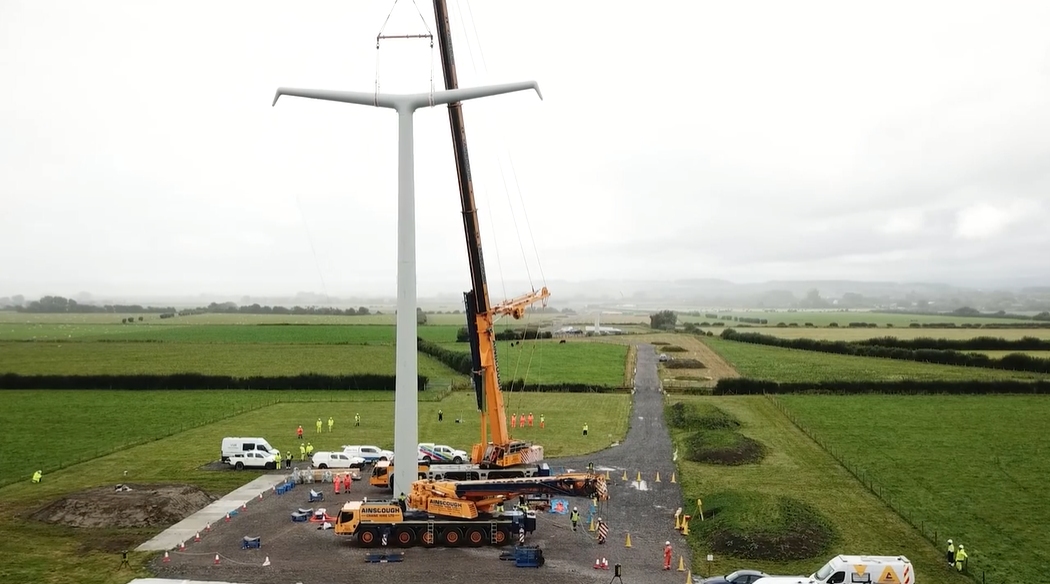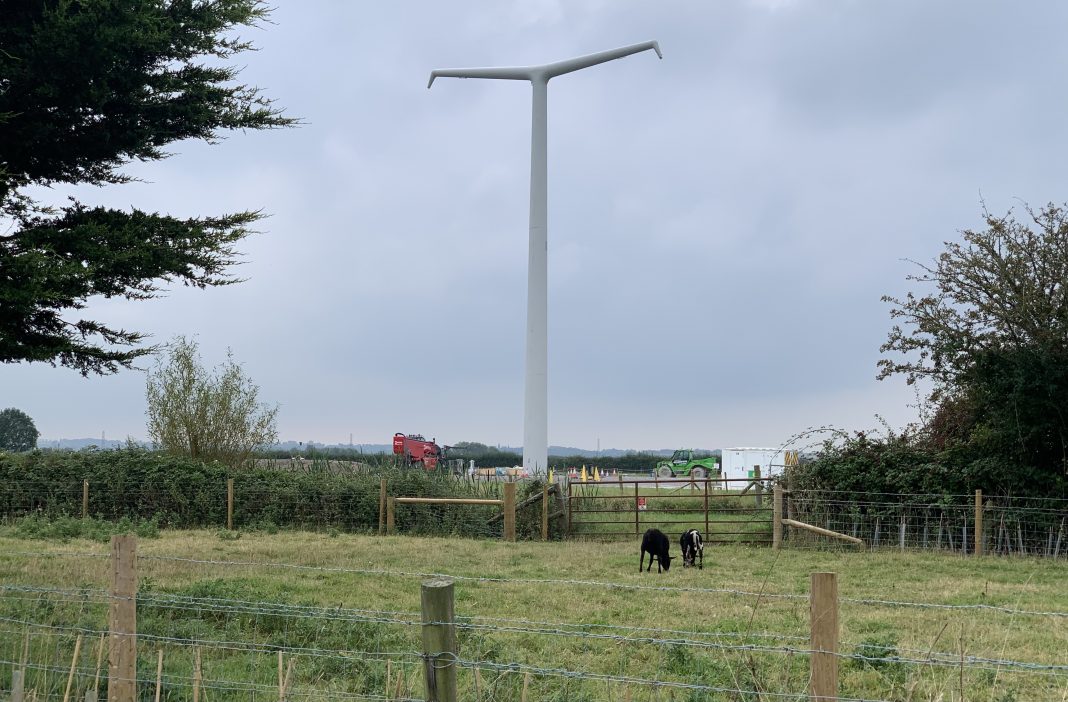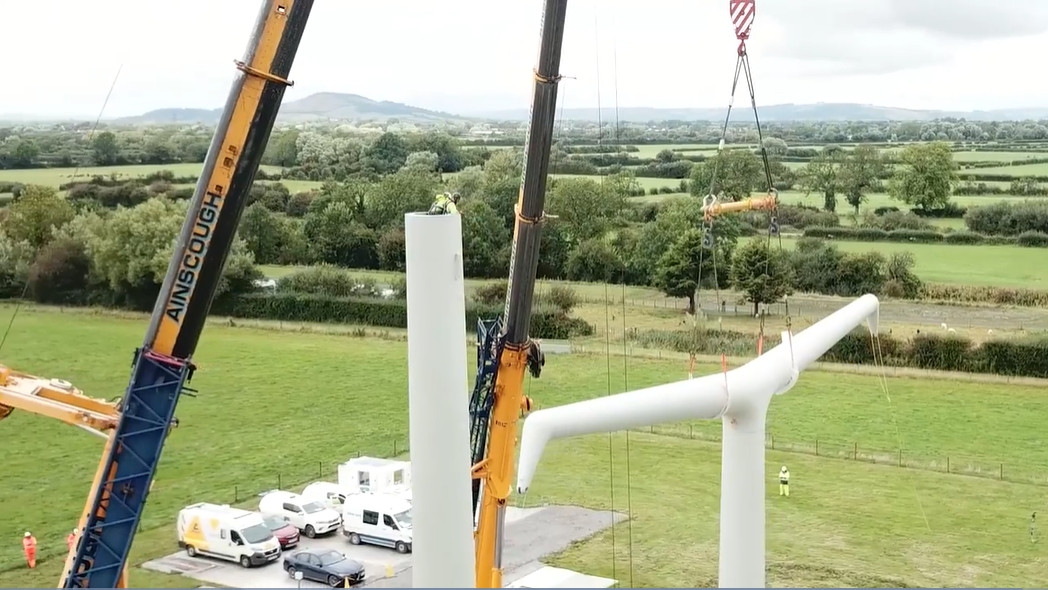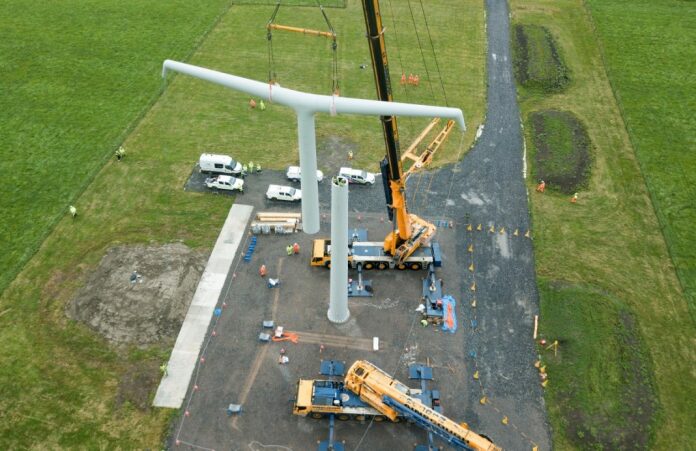The UK’s first ‘T-pylon’, the first new design for an electricity pylon in Britain for nearly a century, has been built in East Huntspill this week.
More than 100 of the huge new T-shaped pylons are being installed across Somerset to carry electricity from Hinkley Point C to Avonmouth.
The UK’s first pylon has been installed in a field off Merry Lane in East Huntspill this week, as pictured here.
The route of the pylons was approved in 2016 after a lengthy legal dispute, with some local residents raising concerns over potential damage to the countryside.
National Grid says the new connection will power up to six million homes and businesses when the power station opens.
The 35 mile (57km) route between Bridgwater and Portbury will run overhead, except for a stretch across the Mendip Hills where the connection will go underground.

Each pylon takes about five days to build. Construction of the first 48 began in September and the remaining 68 pylons, north of Sandford, will begin in 2022.
With a single pole and cross-shaped arms, the pylons stand at 35 metres (114ft) high, around a third shorter than the traditional high-voltage lattice shape.

Chris Bennett, Acting President of National Grid Electricity Transmission, says: “We are always looking for innovative new ways to mitigate the impact of our infrastructure on the natural environment and projects such as T-pylons are a great example.”
“This new design forms part of our significant investment in the network in England and Wales, adding capacity onto the grid to deliver increasing amounts of low carbon energy and support the UK’s drive towards its net zero target.”

The Hinkley Connection project will be ready to connect to Hinkley Point C by the end of 2024, with the project complete at the end of 2025.
The traditional lattice design of pylon has been in use in the UK since 1927 and there are around 22,000 pylons stretching over more than 7,700 kilometres in England and Wales.







